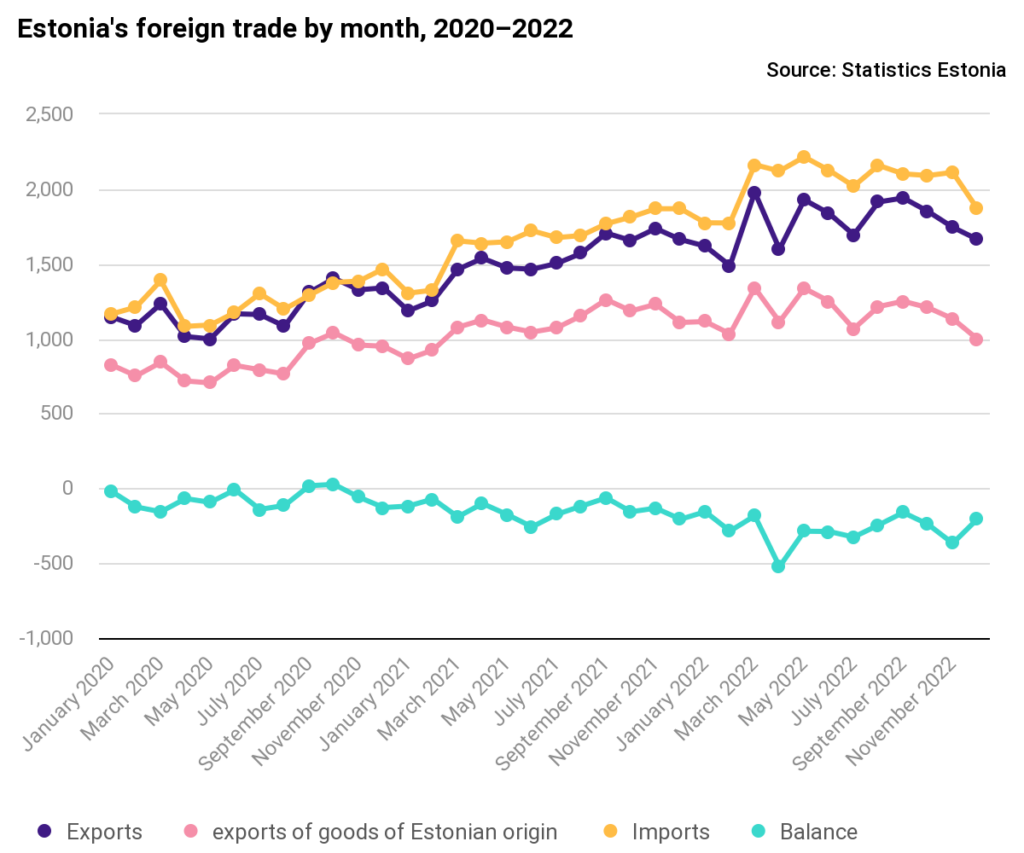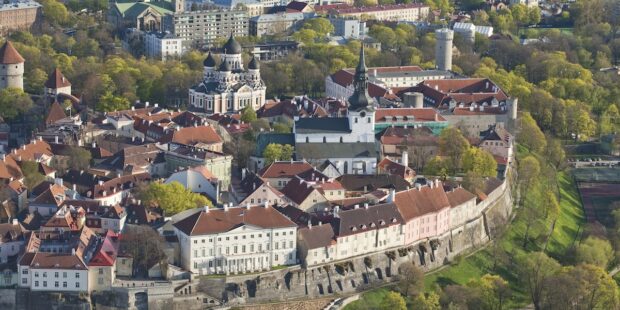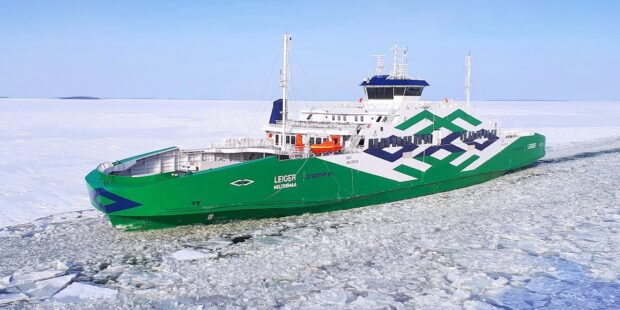Estonia’s trade deficit doubled in 2022
Text Mark Taylor Photo Florian Rebmann / Unsplash
According to data just published by Statistics Estonia, in 2022, exports of goods increased by 17 per cent and imports by 23 per cent compared with 2021. As a result, the trade deficit almost doubled to 3.3 billion euros.
In 2022, Estonia’s exports of goods amounted to 21 billion and imports to 25 billion euros at current prices. The trade deficit was 3.3 billion euros, up by 1.5 billion euros year on year. The increase in the deficit was most affected by trade in raw materials and products of the chemical industry, transport equipment, and mineral fuels. The largest surplus was recorded in the trade of wood and wood products (incl. furniture and prefabricated wooden buildings).
2022 was characterised by increases in the prices of raw materials and energy, in part caused by the war in Ukraine and sanctions imposed against Russia and Belarus.
“Prior to the imposition of sanctions, there was a significant increase in exports and imports of goods. At the beginning of the year, price rises supported the increase in trade values, but in the second half of the year, the economic slowdown started to have an impact,” said Evelin Puura, a leading analyst at Statistics Estonia.
In the second half of the year, exports of goods of Estonian origin began to fall significantly, while re-exports increased. Estonia exported goods to 190 countries and imported them from 156 countries.
“Our main trading partners were the member states of the European Union, which accounted for 70 per cent of exports and 78 per cent of imports,” Puura added.
The top partner country for Estonia’s exports of goods in 2022 was Finland (15 per cent of total exports), followed by Latvia (14 per cent) and Sweden (9 per cent).
The main commodities exported were mineral fuels and electricity, electrical equipment, and wood products. Compared with 2021, the biggest increase occurred in the exports of mineral fuels and electricity, agricultural products and food preparations, and wood and wood products. The biggest drop, however, was recorded in exports of electrical equipment.
Re-exports from Estonia grew by 42 per cent, while exports of domestic goods increased by 7 per cent. The share of goods of Estonian origin in the total exports was 66 per cent. The decline in the share of domestic goods compared with the previous year was most affected by the fall in exports of processed fuels and communication equipment.
The top partner countries for Estonia’s imports of goods were Finland (16 per cent of total imports), Lithuania, Germany, and Latvia (all three accounting for 10 per cent).
The main commodities imported to Estonia were mineral fuels and electricity, electrical equipment, base metals and articles of base metal, and mechanical appliances. The biggest increases were in imports of mineral fuels and electricity (for 1.6 billion euros), agricultural products and food preparations (for 485 million euros), and mechanical appliances (for 343 million euros).
In December 2022, both export and import values remained at the same level as in 2021. Estonia exported goods worth 1.7 billion and imported goods worth 1.9 billion euros. The main export and import items were mineral fuels and electricity, electrical equipment, agricultural products and food preparations. The main destinations for exports were Latvia, Finland, and Sweden, whereas most imports came from Finland, Germany, and Latvia.

To learn more about this and similar topicsEstonia Exports Imports Mineral fuels Statistics Estonia Trade Trade Deficit Wood










